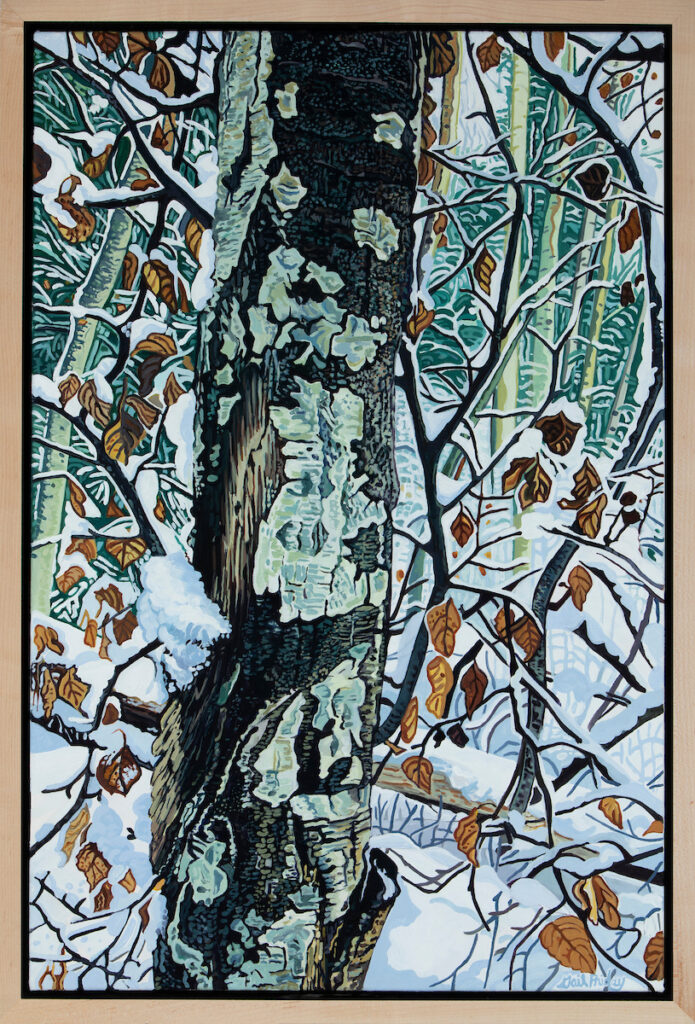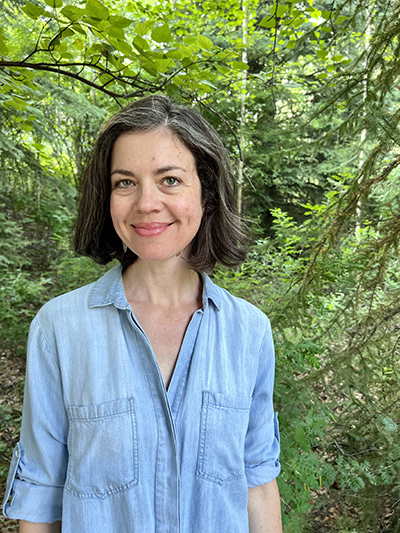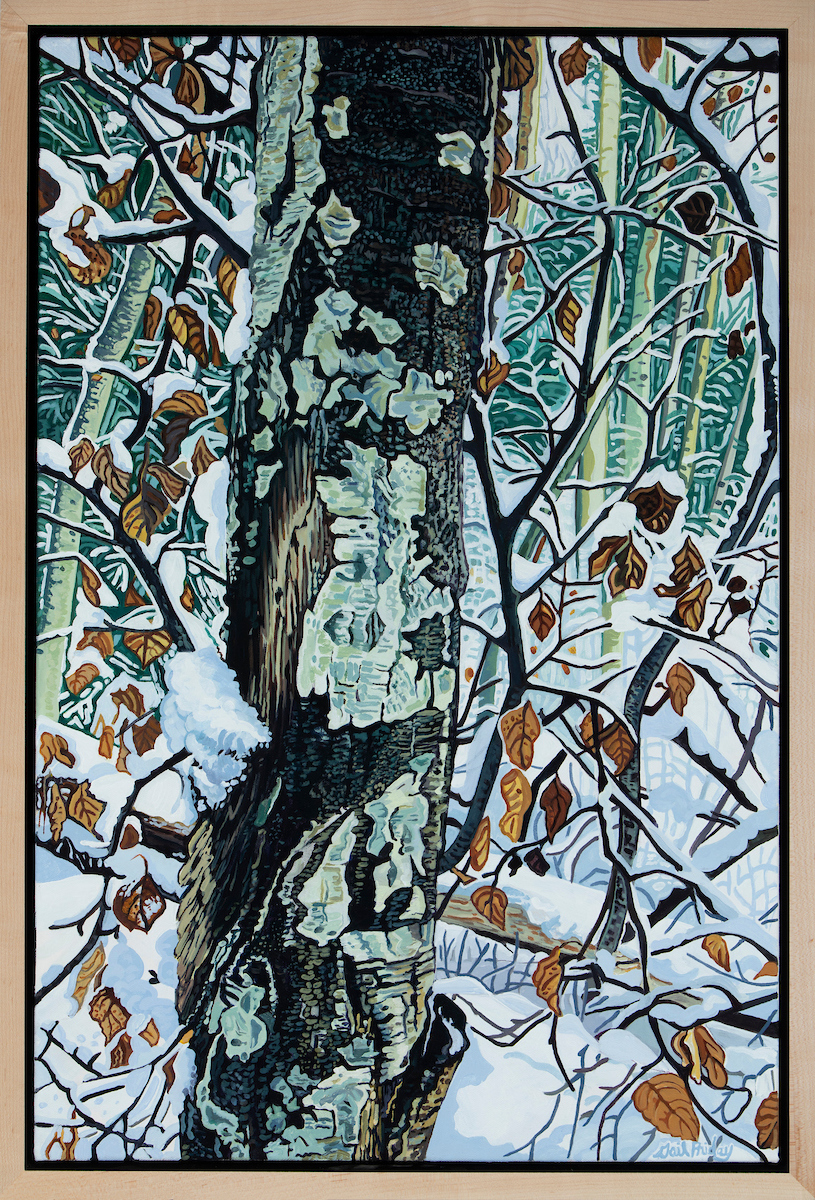Gail Priday

Too Far Gone
In early November 2021, I went for a walk on local trails with microbiologist Dr. Mary Beth Leigh and boreal forest ecologist Dr. Roger Reuss. As we walked and talked, many stories started to take shape. I had long been curious about why there were so many dead trees along these trails. The conversation shifted to aspen running canker, a disease affecting aspen trees in Interior Alaska. The scientists pointed out that many of the dead trees were aspens, and many of them were young. This fact led Roger to speculate that aspen running canker had come through at some point. I learned that this disease is an aggressive canker disease caused by a novel fungal pathogen that can rapidly kill the cambium of aspen trees as it spreads along tree boles. It affects young trees in mixed-age stands, and factors such as drought and leaf miner infestation increase the likelihood that the trees will become infected.
We did not see any active cankers that day because once a tree is dead, it can be challenging to determine the cause. As the scientists spoke about the disease, I heard words like “comorbidities” and “inoculation,” which felt eerily relevant to current events. By the end of our walk, I was sure I wanted to learn more about this disease. I did a lot of reading and made plans to go out again in search of active cankers. One week after our initial walk, I went with Roger and forest pathologist Dr. Lori Winton to a site where researchers had flagged infected trees the previous summer. Like in all the papers I read on the topic, the young trees were infected. Some had noticeable, clearly demarcated margins and bright orange coloration. There were many dead trees and many that would be dead soon. I took lots of pictures and wrote various phrases in my journal. One phrase that stuck with me was “too far gone.” Both Lori and Roger used that phrase in reference to several of the dead aspens that were too far gone for the cause of death to be determined.
The first piece I made for this collaboration, Too Far Gone, references the dead aspens we saw that day, and the many dead aspens on the trails near my home.
The opportunity to go to the field and learn about a topic firsthand from the scientists conducting the research, and to be able to ask endless questions, was key to this collaboration. The scientists I worked with are passionate about their work and generous with their time. I am thankful for their dedication to the boreal forest and for taking the time to share their research with me.
Gail Priday
Gail Priday is a visual artist living in Fairbanks, Alaska. She holds an MFA in painting and printmaking from the University of Alaska Fairbanks, an MEd in art education from Towson University, and a BA in art from James Madison University. Priday finds inspiration from the natural world, specifically the boreal forest. Her work has been featured in exhibits, public spaces, and private collections throughout Alaska and beyond. She values interdisciplinary collaborations and has been involved in ITOC since 2016. She enjoys working in the studio, long walks in the woods, and spending time with her family.
Website: gailpriday.com


